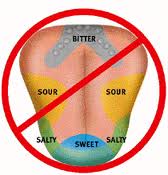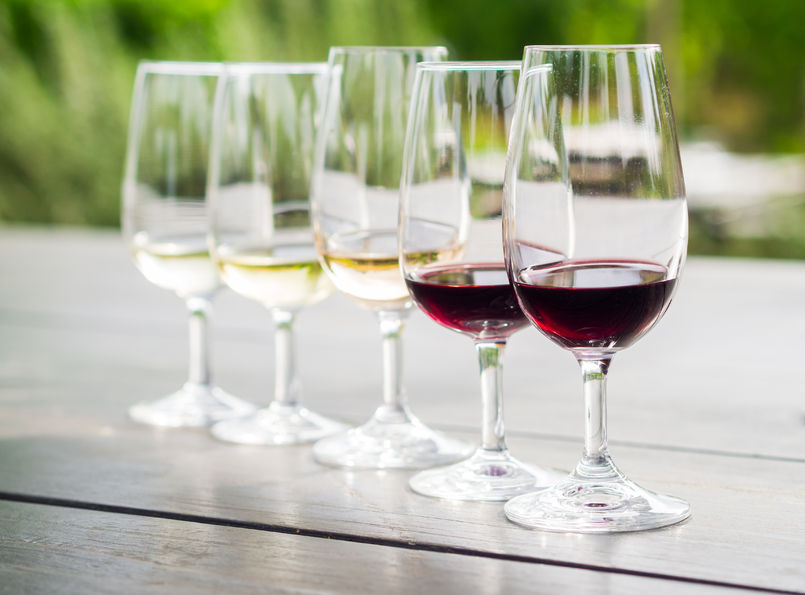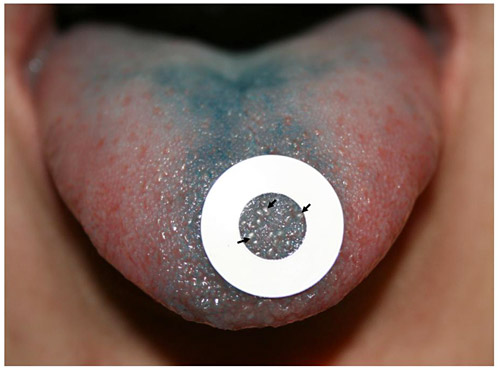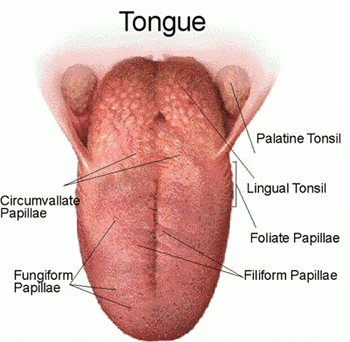The Tongue Map and
Four Other Wine Tasting Fallacies

Is the tongue map bogus? That was the question I was asked Monday by Paul K. from the Wine Talks Podcast during the recording of my upcoming episode. I was baffled at first that wine professionals were still asking the question.
But I sensed he knew the answer already.
The tongue map is bogus, period.
So why do people still talk about it as an established fact?
Why do certified sommeliers still published articles with this fallacy?
Likely because they don’t know.
May I suggest bringing sensory scientists to revise these curriculum?
Here is the true story of the tongue map.
The story was first reported to me by my professor in graduate school and also confirmed recently by Robert Margolskee, director and president at Monell Chemical Senses Center [1].
In 1901, Dr. Hänig, a psycho-physicist, published a scientific article describing his work to test various areas on the tongue for their sensitivity to different taste molecules. His article was written in German.
The English translation was unfortunately inaccurate and reported that Dr. Hänig identified the infamous taste areas on the tongue.
 The infamous tongue map
The infamous tongue mapSince then, several research publications have demonstrated the presence of taste buds and papillae all over the tongue and the pharynx. Although taste receptors respond specifically to certain taste molecules, the “sweet receptors” are not solely located on the tip of the tongue. Read more.
Unfortunately the tongue map is only one of the fallacies.

The other inaccurate facts still communicated by some wine educators include:
- Tasting wine from the “lightest” to the most complex profile.
- Pretending that experience makes you a super taster.
- Associating high price with high quality.
- Attributing too much importance to palate sensations.
Below are a few pointers.
1- Wines should be tasted from the lighter style to the most complex ones.

That’s what most wine appreciation classes will teach you or what winery staff will advise you.
But is there a rationale for that?
This false belief can mislead your tasting. Read More about why wine samples should be randomized to minimize the sequence effect and be fair to the wines.
2-Supertasters are genetically geared to be better wine tasters

Statistics are telling:
- 25% of North Americans are supertasters,
- 25% are non tasters, and
- 50% are tasters.
But what does it have to do with wine?
Read more about this genetic trait that affects sensory perceptions, sensory preferences, but not so much our abilities to be a discerning wine taster.
3- The more expensive the bottle, the better the wine quality

When we see the wine auctions going wild, that’s what we are tempted to think.
Does high price equal high quality?
Read More about how price affects consumers perceptions of wine quality.
4-What about sensing on the middle palate?
I see many wine notes describing sensations in the middle palate or aromatic sensations on the palate.
Once again, this is more an artistic rendering of the tasting experience than the actual sensory experience.
Your palate has little to do with your abilities to be a discerning wine taster.

There is a hard and soft structure at the top of the mouth cavity, that separates the nasal passage with the mouth, as you can see on the figure above.
You may feel tactile sensations, and that's about it.
The palate is not critical in your wine tasting experience.
Defining someone as a fine palate might not be a compliment after all.
References
[1] WIRED: Why this taste map is wrong, March 30, 2020
Published November 19, 2020
Home > Wine Tasting Basics > Wine Tasting Myths




New! Comments
Have your say about what you just read! Leave me a comment in the box below.